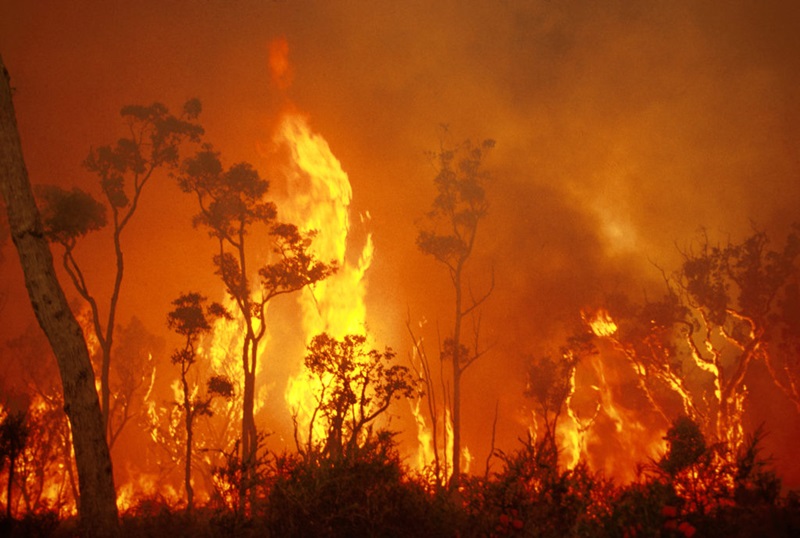From Analysis to Activity: Using Your BAL Report to Alleviate Bushfire Ris
From Analysis to Activity: Using Your BAL Report to Alleviate Bushfire Ris
Blog Article
How BAL Report Impacts Bush Fire Defense Measures
In the realm of bush fire security, the Structure Assault Degree (BAL) report stands as a critical device that substantially influences the safety and resilience of homes in fire-prone locations - BAL Report. The influence of a BAL assessment expands much beyond plain documents; it serves as the cornerstone for figuring out the suitable building standards and fire defense measures required to alleviate the risks posed by bushfires. As communities face progressively serious fire seasons, comprehending how the BAL report shapes these protective measures comes to be critical for home builders, policymakers, and home owners alike
Understanding the Bushfire Assault Degree

Relevance of BAL Record Evaluation

Furthermore, the BAL report analysis works as a fundamental action in conforming with legal responsibilities and requirements associated with bushfire security. Local councils and authorities frequently mandate the entry of a BAL report as component of the planning and building authorization procedure to ensure that homes are appropriately protected against bushfire dangers. Stopping working to carry out a complete BAL report analysis can lead to insufficient defense steps, leaving residential properties at risk to ruining bushfire events.
Construction Specifications Based Upon BAL
An extensive understanding of the Bushfire Assault Degree (BAL) enables homeowner to carry out building standards customized to their particular danger account. Building requirements based upon BAL are crucial in reducing the effect of bushfires on buildings. The BAL ranking categorizes the prospective danger a residential or commercial property deals with during a bushfire on a range from BAL-Low to BAL-FZ (Flame Area) Each BAL level corresponds to details building requirements laid out in the Australian Common AS3959-2018 Construction of Structures in Bushfire-Prone Areas. Buildings classified as BAL-Low may just need standard procedures such as removing particles and preserving gardens, while those in greater BAL categories require even more robust actions like ash displays, fire-resistant products, and secured windows. Abiding by these construction standards not just improves the structural strength of the residential or commercial property but also improves the total security of homeowners throughout a bushfire occasion. For that reason, homeowner should thoroughly consider see this website their BAL score and comply additional info with the equivalent building standards to adequately protect their homes and occupants.
Executing Fire Protection Procedures
With the foundation of construction criteria based on Bushfire Attack Level (BAL) in location, the focus now changes towards the practical implementation of fire defense procedures to strengthen properties versus bushfire risks. Carrying out fire security procedures involves a mix of passive and energetic strategies to improve the durability of buildings in bushfire-prone locations. Easy steps consist of utilizing fire-resistant structure products, installing ash guards on vents, sealing spaces in roof coverings and walls, and preserving a clear space around the home devoid of flammable greenery. Energetic actions incorporate having firefighting devices readily offered, such as tubes and water pumps, along with producing a defendable space around the building by getting rid of vegetation and having a well-kept garden. Furthermore, creating a discharge plan and ensuring all citizens recognize emergency situation procedures are important elements of effective fire protection measures. By integrating both passive and energetic methods, residential properties can substantially decrease their susceptability to bushfire cases and increase the safety and security of passengers.
Shielding Houses Versus Bushfires
Effectively guarding homes versus the destructive influences of bushfires requires a aggressive and comprehensive technique to fire protection measures. In addition, sealing vents and voids to protect against cinder intrusion, as well as incorporating fire-resistant doors and home windows, can assist strengthen the home's protection versus bushfires. By embracing a proactive position and integrating these protective actions, home Website owners can significantly enhance their chances of protecting their homes against bushfires.
Verdict
To conclude, the Bushfire Attack Level (BAL) report plays a crucial duty in identifying the necessary defense steps against bushfires. By analyzing the BAL, building and construction requirements can be customized to reduce the risks and make sure the security of homes in fire-prone locations. Applying fire protection steps based upon the BAL report is crucial in securing residential properties from possible bushfire dangers. It is crucial for property owners to prioritize BAL analyses and adhere to suggested construction standards to enhance bushfire resilience.
In evaluating bushfire danger to homes, recognizing the Bushfire Assault Level (BAL) is a crucial component for applying reliable defense actions. Overall, a clear understanding of the Bushfire Strike Degree is important for carrying out ample protection measures and mitigating the influence of bushfires on residential properties.

Report this page